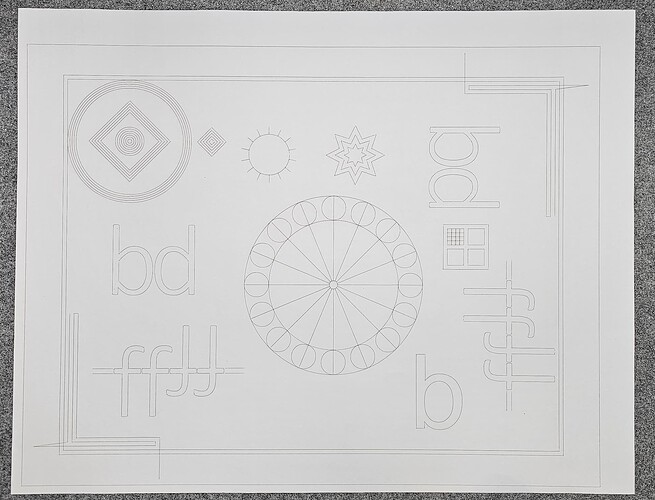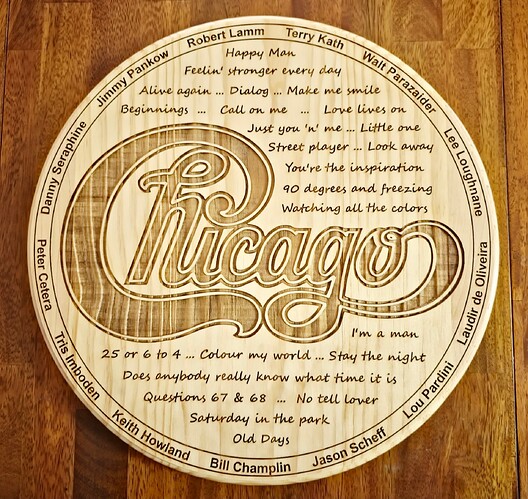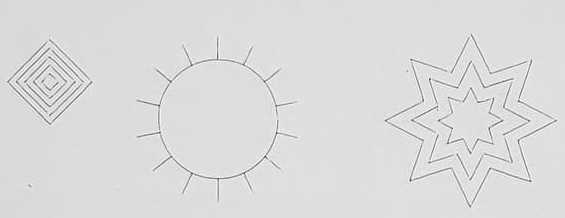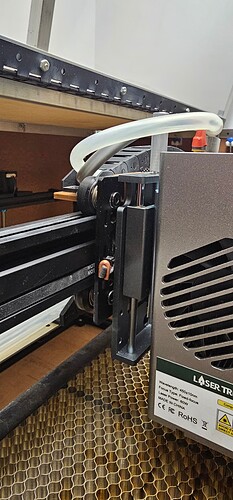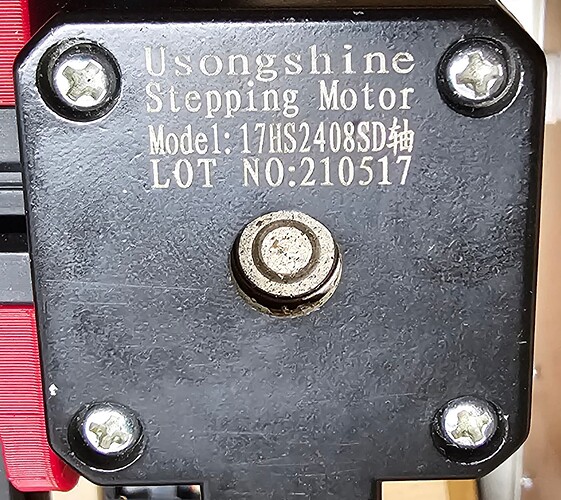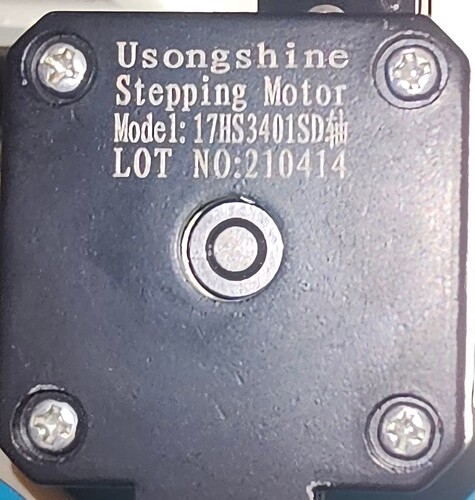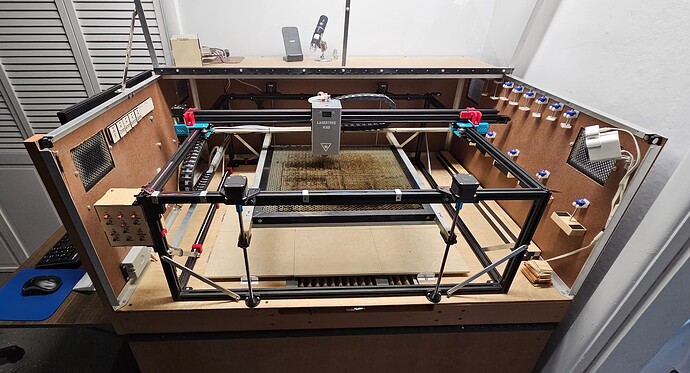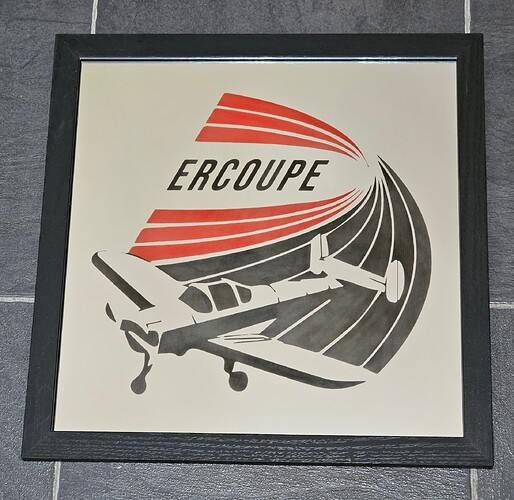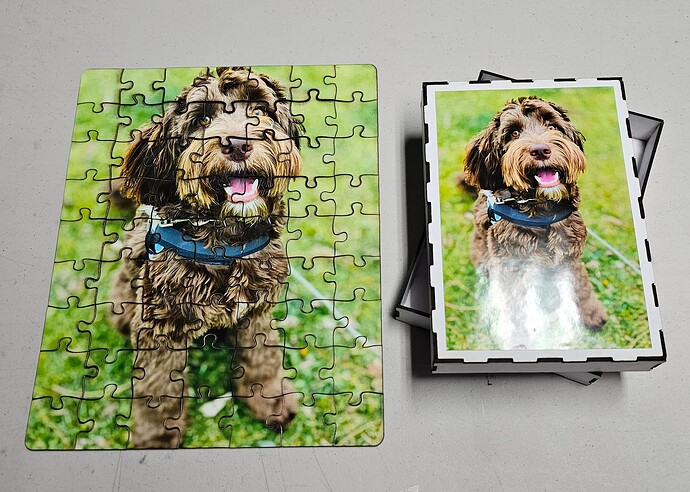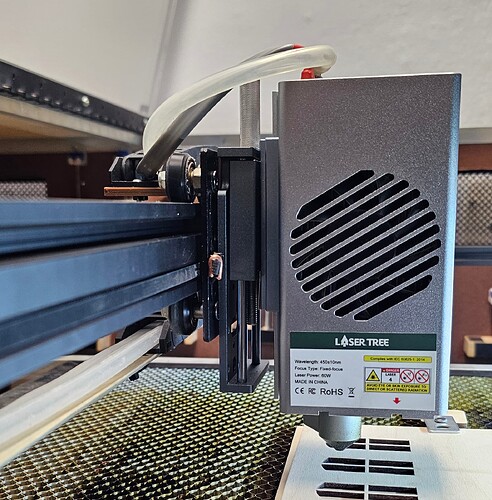What I was seeing isn’t matching up with the rotation of a v-slot wheel or stepper pulley. The frequency is higher and very consistent. Since adjusting the belt tensions and POM wheel eccentric nuts, it’s difficult to see the banding at all.
This a block 20mm high and 250mm wide, with the K60 set to 20w and running at 9000 mm/min, 50% power, and an interval of 0.200 mm. It looks extremely clean. Based on the spacing of the bands, I was suspecting either harmonics from the X stepper motor or something produced by the belt. I was running the belt too tight and once loosened, the banding was pretty much gone.
My old 5.5w laser head weighs 220g/7.76oz. The K60 weighs 1263g/44.55 oz. When I built the new laser frame two years ago, I used a 2020 v-slot rail, which was fine for the old, light weight laser head. As soon as I hung the K60 on it, I immediately knew that it needed something stiffer. I swapped out the 2020 rail for a 2040, and designed and 3D printed the thick red brackets at each end of the gantry. They’re bolted to the outer rail wheel axels. It’s as rock solid as I can make it. From red bracket to red bracket, the gantry is 36" wide, and I’d be afraid of a linear rail twisting over such a long length with the heavy K60 hanging on it.
At a minimum, I’m going to replace the POM wheels with polycarbonate and stop there for now. I can dump more money into it but I don’t feel I’ll get enough gain to justify the cost. This is just a hobby for me, not a money maker, so I have to keep costs under control. Maybe in a couple of years, I’ll build a new laser and go CO2. For now, I’m having a blast making things out of wood, slate, chipboard, etc. I even discovered that I can laser mirrors by laying them facedown, turning the power way down, and the laser removes the silver reflective coating from the back of the mirror, then paint the back with different colors. They look really awesome!
I even got really creative and engraved a batch of peanut butter cookies for a Bengals party!
Puzzles using chipboard make awesome gifts too!
I want to thank everyone for all of the input I’ve received. Like any hobby, there is so much to discover.
